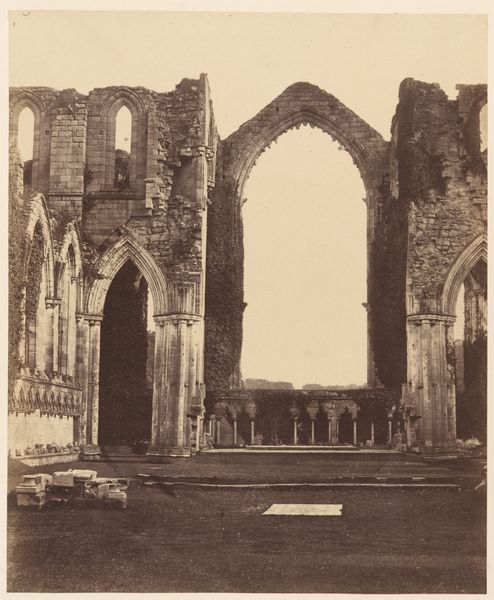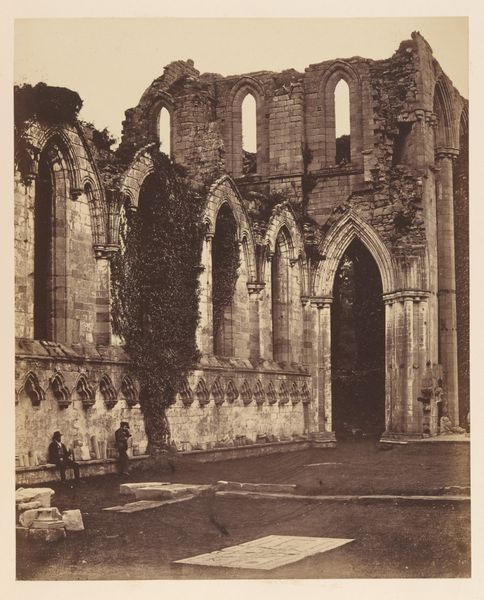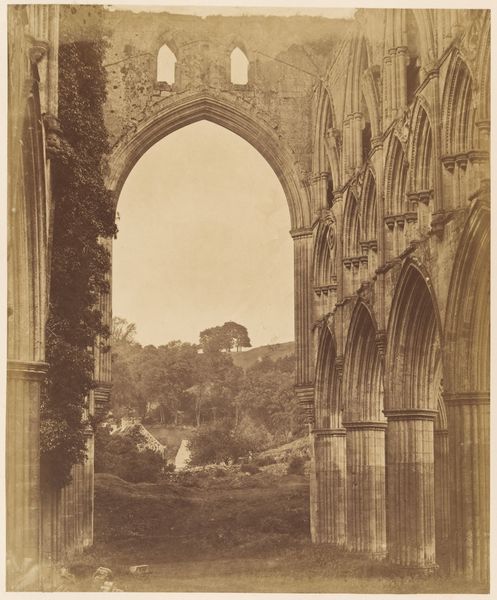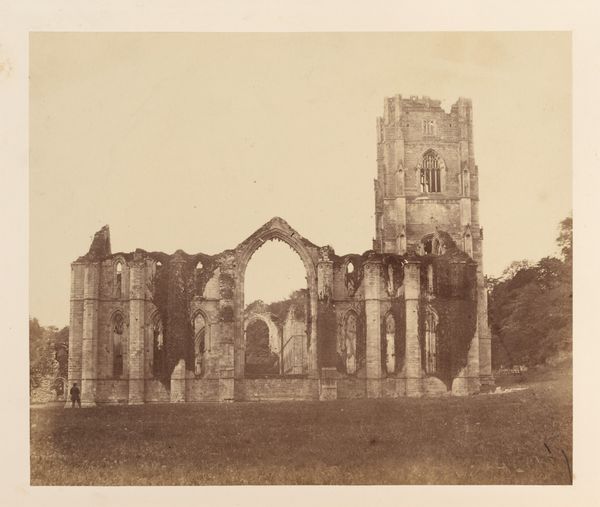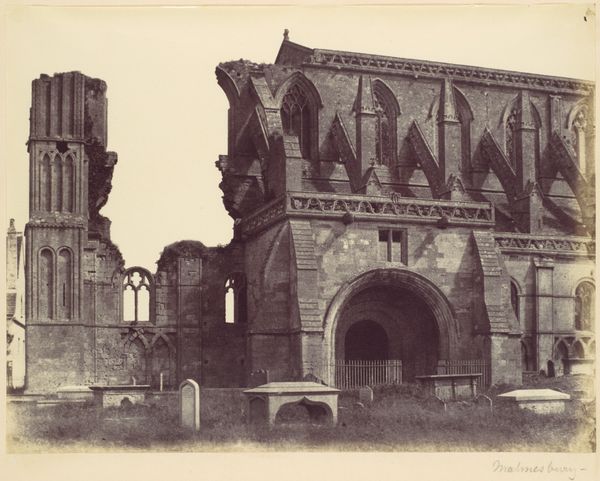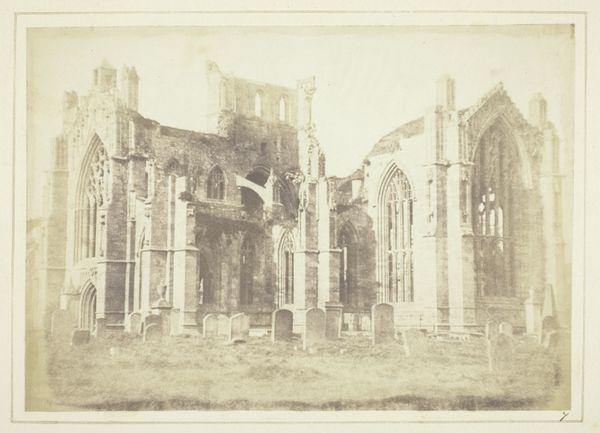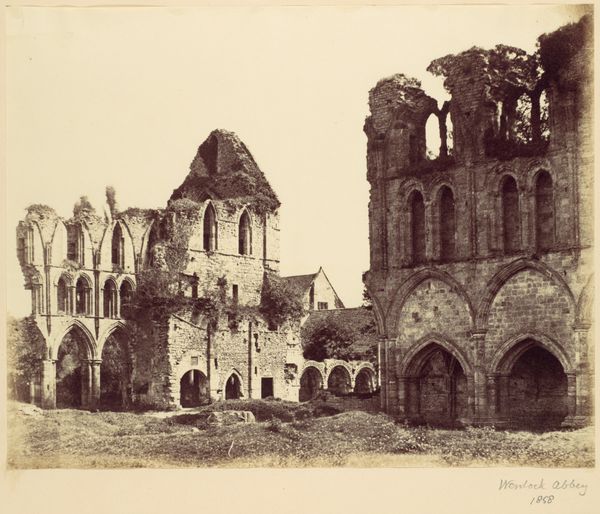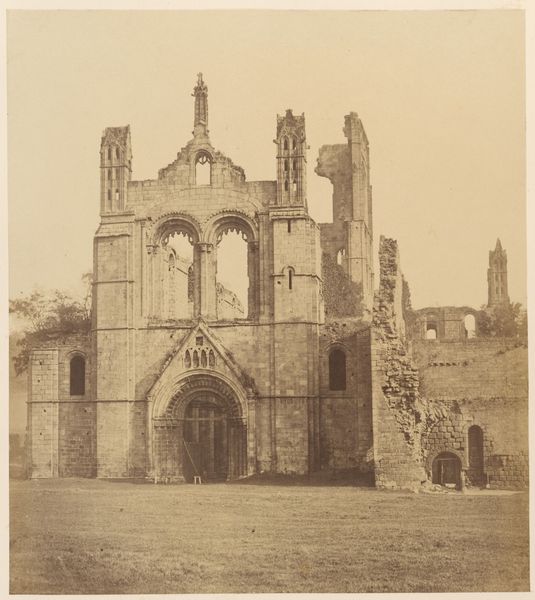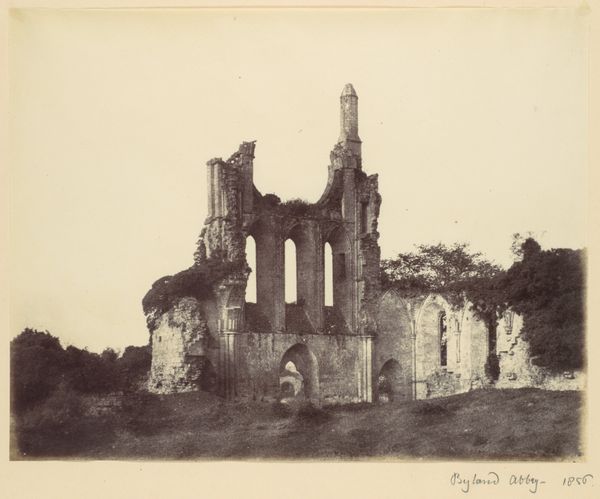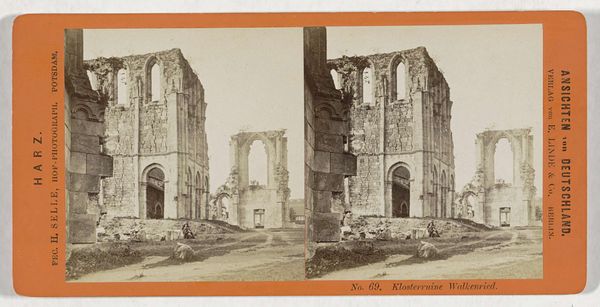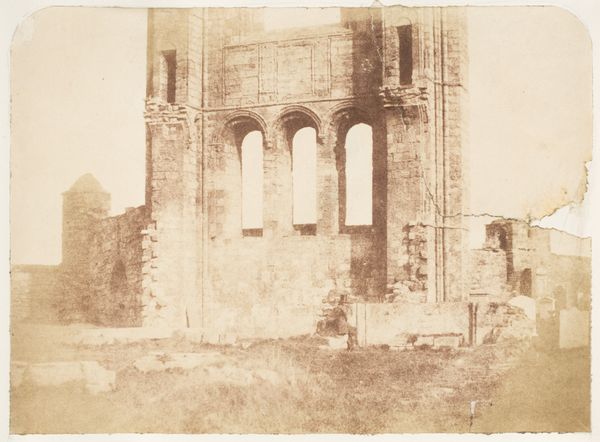
Dimensions: image: 28 x 36.9 cm (11 x 14 1/2 in.) mount: 40.4 x 59.5 cm (15 7/8 x 23 7/16 in.)
Copyright: National Gallery of Art: CC0 1.0
Curator: Roger Fenton's photograph, "Rievaulx Abbey, the North Transept," taken in 1854, captures the Romantic sensibility towards ruins that permeated much of the 19th century. Editor: There's a strong sense of melancholy in this print. The scale is breathtaking, yet there's a poignant feeling of time and decay woven into the stones themselves. You can almost feel the weight of history bearing down. Curator: Indeed. Fenton was working at a time when photography was being used both for documentation and artistic expression. Architectural photography was a popular genre and these crumbling medieval structures offered an enticing link to a rich, albeit fraught, past. Abbeys like Rievaulx had been dissolved during the Reformation. Editor: It's more than mere documentation, though. Note the stark contrast between light and shadow; these aren't just ruins; they're symbols. The Gothic arches reach toward the heavens, even in their broken state. They suggest a spiritual striving, even after the dissolution and secularization that you pointed out. There’s an echo of their original function, perhaps even divine judgment. Curator: Certainly, viewers would bring their own interpretations. Consider the socio-political implications; the rise of photography was occurring alongside intense debates about England’s religious identity and its relationship to its medieval heritage. Fenton’s photograph participates in that broader cultural discourse, suggesting that ruins embodied a palpable national narrative of both loss and resilience. Editor: The composition reinforces this dual feeling. The road cutting across the bottom left invites you into the scene, almost tempting you to wander amidst the crumbling structure. It's like stepping into a fading memory or even a ghostly encounter with faith and loss. The overgrowth creeping over the stone could signal life reclaiming even sacred places. Curator: I think what interests me most is Fenton's awareness of the photographic process itself. The print's sepia tone imparts a sense of timelessness and artifice, reminding us that what we see is mediated through both the camera's lens and the artist's deliberate choices. It calls into question ideas about photographic "truth," especially when representing complex, emotionally charged subject matter like the ruins of Rievaulx Abbey. Editor: Yes, it layers multiple meanings and feelings on top of each other, so it continues to draw one into thinking of temporal shifts. Thank you; I appreciate your thoughts. Curator: As do I. Thank you.
Comments
No comments
Be the first to comment and join the conversation on the ultimate creative platform.
